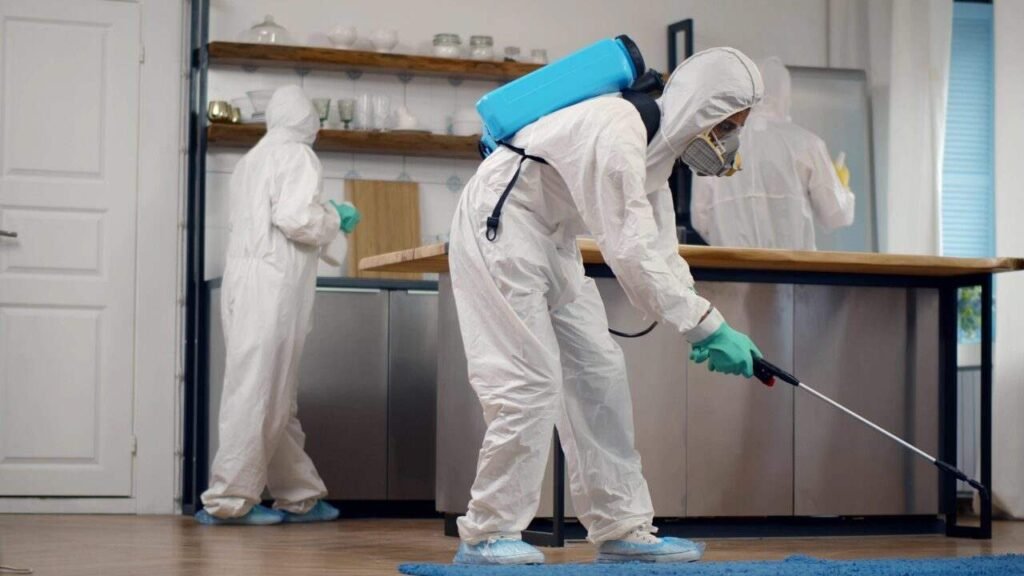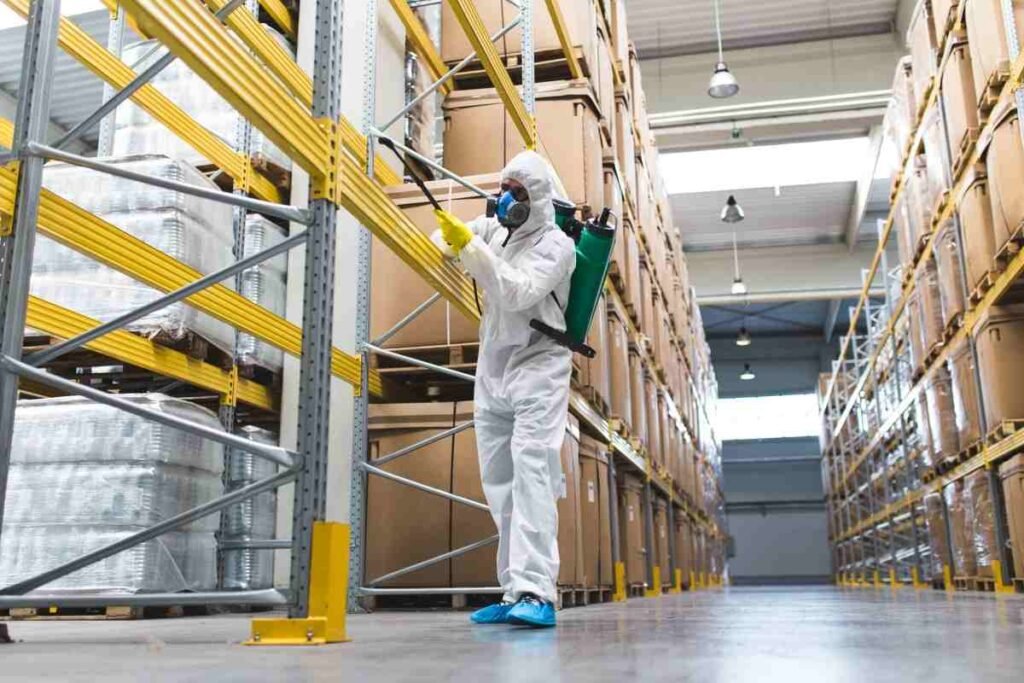Commercial pest control services in NYC, like Complete Bed Bug Exterminating NYC, use a variety of methods to identify pest infestations. They start with a thorough inspection of the premises, looking for signs such as droppings, nests, or damage. They may also use monitoring devices and traps to capture and identify the pests. Experienced technicians analyze these findings to determine the type of infestation. This careful identification process ensures that they can tailor their treatment plan to effectively eliminate the specific pests causing the problem.
Choosing the right commercial pest control company in NYC involves an initial consultation and thorough inspection process. During the consultation, the company gathers information about the pest issue and client concerns. A detailed inspection follows, where trained technicians assess the property for signs of pests, entry points, and conducive conditions. This comprehensive approach ensures that the chosen pest control company understands the specific needs of the client and can develop an effective pest management plan tailored to their situation.
The process often begins with an initial consultation. This could be a phone call or an on-site visit where the pest control service, such as Complete Bed Bug Exterminating NYC, gathers information about the problem. They’ll ask questions about the types of pests observed, their locations, and any patterns in their behavior.
Once they have some background, a detailed inspection follows. Technicians will physically inspect the premises, focusing on areas where pests are likely to be found. In commercial settings, this could include kitchens, storage areas, basements, and utility rooms. They’re looking for evidence such as:
Different pests leave different types of droppings. For instance, rodent droppings are typically pellet-shaped, while cockroach droppings are smaller and more granular.
Rodents often build nests out of shredded paper or fabric. Seeing these can confirm their presence.
Chewed wires, gnawed wood, or torn packaging are signs of rodent activity. Holes in walls or floors can indicate entry points for various pests.
Dusty surfaces might reveal footprints or tail marks. Some pests, like rodents, use the same paths repeatedly, leaving grease marks along walls.
Sometimes, the most obvious sign is spotting the pests themselves, either alive or dead.

Commercial pest control companies, including Bed Bug Control Services, use monitoring devices such as sticky traps, bait stations, and electronic sensors to detect and capture pests. These tools help identify the presence and extent of infestations, ensuring accurate and targeted treatments. For bed bugs, specialized monitors and traps can detect even low-level infestations, allowing for prompt and effective control measures. Regular monitoring is essential for ongoing pest management and prevention.
In addition to visual inspections, pest control professionals use various monitoring devices to gather more data. These include:
Different types of traps are set up to capture pests. Sticky traps, for example, are often used to catch insects like cockroaches or spiders. Snap traps or live traps might be used for rodents.
These are used primarily for rodents and insects like ants. They help in both monitoring the presence of pests and controlling their populations.
For more technologically advanced approaches, some services use electronic devices that can detect and report pest activity in real-time. These might include infrared cameras or motion detectors.
Once evidence is collected, the next step is identifying the pests accurately. This involves:
Technicians compare the physical evidence to known characteristics of various pests. This could involve looking at the size and shape of droppings, the type of damage, or the appearance of the pests themselves.
In some cases, especially with smaller insects, technicians might use a microscope to examine the pests more closely. This is often used to identify specific species of ants, bed bugs, or mites.
Understanding the behavior of the pest helps in identification. For instance, bed bugs typically hide in mattresses and furniture, while cockroaches are more likely to be found in kitchens and bathrooms.
Technicians consider the environment of the infestation site. Pests are often specific to certain conditions – moisture levels, temperature, availability of food, etc. For example, a warm, humid environment might be more likely to harbor cockroaches or termites.
Commercial Pest Control Services in NYC, NY, rely on the expertise and training of their technicians to accurately identify and manage pest infestations. These professionals are trained to recognize signs of various pests, understand their behaviors, and use advanced control methods. Their expertise ensures precise identification and effective treatment plans tailored to each infestation. Ongoing education and certification keep them updated on the latest pest control techniques and regulations, ensuring top-notch service.
A significant part of pest identification relies on the expertise and training of the pest control professionals. Companies like Complete Bed Bug Exterminating NYC employ technicians who are trained to recognize subtle signs of various pests and understand their habits and life cycles.

Once the type of pest is identified, the pest control service will typically provide a detailed report. This report outlines:
The exact species or group of pests identified.
Description of droppings, nests, damage, and any live or dead specimens.
Specific locations within the property where evidence was found.
Suggestions for treatment and prevention.
Clear communication with the client is essential. The report is discussed with the client to ensure they understand the findings and the recommended course of action.
With the pest identified, a tailored treatment plan is developed. This plan will be specific to the type of pest, the extent of the infestation, and the particular environment of the commercial space. For example:
Complete Bed Bug Exterminating NYC might use a combination of heat treatments, chemical treatments, and encasements for mattresses and box springs. Bed bugs require thorough treatments due to their resilience and ability to hide in tiny crevices.
The plan could include sealing entry points, setting traps, and using rodenticides. Ongoing monitoring might be recommended to ensure the rodents don’t return.
Treatment might involve baiting, insecticidal sprays, and improving sanitation practices to reduce food and water sources.
Effective pest control isn’t just about one-time treatment. Follow-up visits and ongoing monitoring are crucial to ensure that the infestation is completely eradicated and to prevent future occurrences. Pest control services will schedule follow-up inspections to check the effectiveness of the treatment and make any necessary adjustments.
Fly Control Services in NYC, NY, implement preventative measures to minimize fly infestations. These measures include proper waste management to reduce breeding sites, installing fly screens on windows and doors, and using fly traps or baits in strategic locations. Regular inspections and sanitation practices are crucial for preventing fly populations from establishing and spreading. Integrated pest management (IPM) strategies may also be employed, combining various methods for long-term fly control and prevention.
Prevention is always better than cure. After dealing with the immediate infestation, pest control services often provide advice on preventative measures. This could include:
Keeping areas clean and free of food debris.
Sealing cracks and holes that pests can use as entry points.
Scheduling regular pest inspections to catch any new infestations early.
Many pest control services, including Complete Bed Bug Exterminating NYC, use an Integrated Pest Management (IPM) approach. IPM is a comprehensive strategy that combines different methods and practices to manage pests effectively and sustainably. It focuses on:
Regular monitoring and accurate identification are the first steps.
Implementing measures to prevent pests from becoming a problem.
Using a combination of biological, physical, and chemical control methods.
Continuously evaluating the effectiveness of the pest management strategies and making necessary adjustments.
How can pest infestation be identified?
Pest infestations can be identified by inspecting for signs such as droppings, nests, and physical damage to property. Monitoring devices like traps and electronic sensors can capture or detect pest activity. Expert analysis of these findings, including visual identification and understanding pest behavior, ensures accurate identification.
How do you identify major insect pests?
Major insect pests can be identified by examining physical signs such as droppings, damage to plants or structures, and the insects themselves. Monitoring tools like sticky traps can capture insects for closer inspection. Expert analysis, often involving visual identification and sometimes microscopic examination, helps accurately determine the insect species and the extent of the infestation.
What do commercial pest control companies use?
Commercial pest control companies use a variety of tools and methods, including traps, bait stations, and electronic monitoring devices to detect and capture pests. They employ chemical treatments, heat treatments, and biological controls tailored to the specific type of pest and infestation. Additionally, they use integrated pest management (IPM) strategies that combine prevention, monitoring, and targeted treatments to effectively manage and prevent pest issues.
What evidence should you look for pest infestation?
To identify a pest infestation, look for evidence such as droppings, nests, or physical damage to structures and plants. Additional signs include grease marks, tracks, and unusual odors. Seeing live or dead pests is a clear indication of an infestation.
What determines an infestation?
An infestation is determined by the presence of a significant number of pests that cause damage, spread disease, or create unsanitary conditions. Key indicators include visible pests, extensive droppings, nests, or structural damage. Expert assessment often confirms the severity and extent of the pest presence, distinguishing between a minor issue and a true infestation.
Identifying the type of pest infestation in a commercial setting in NYC involves a systematic and thorough approach. From initial inspections and the use of monitoring devices to expert analysis and tailored treatment plans, each step is crucial for effective pest management. Services like Complete Bed Bug Exterminating NYC bring in-depth knowledge and experience to the table, ensuring that businesses can remain pest-free and operate smoothly. By focusing on accurate identification and integrated management, they provide comprehensive solutions that address both immediate and long-term pest control needs.